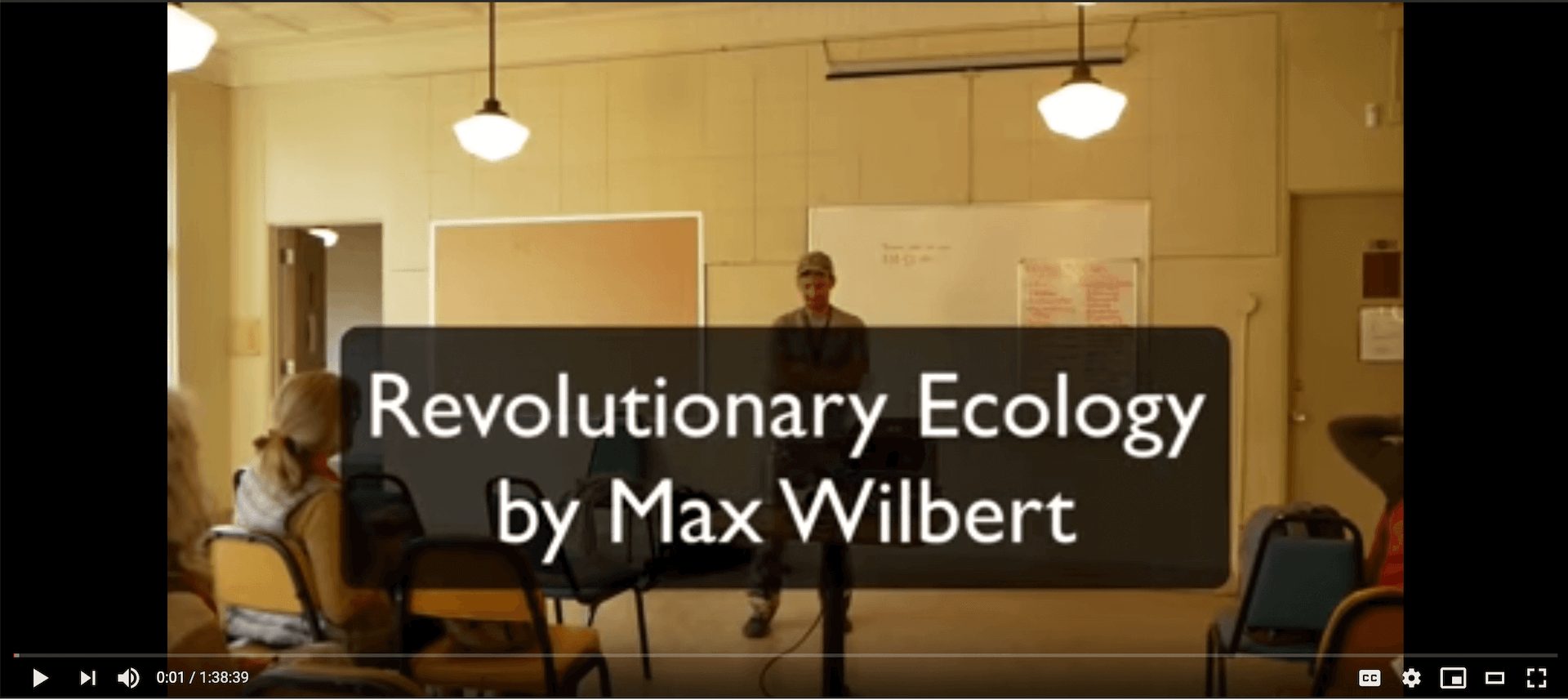
by DGR News Service | May 20, 2019 | Colonialism & Conquest
By Elizabeth Robson / Art for Culture Change
In the preface to Columbus and Other Cannibals, Derrick Jensen asks: “why is the dominant culture so excruciatingly, relentlessly, insanely, genocidally, ecocidally, suicidally destructive?” [1]
The author of Columbus and Other Cannibals, Jack D. Forbes, goes on to answer Derrick’s question in the chapters of his remarkable book, pinning the main cause of our suicidal destruction on a virus of the mind, wétiko. Wétiko was first identified by Native Americans and other indigenous people, when they saw how white colonizers so disrespected the natural world, women, and all people who were not yet colonized, they needed a name for the sickness in the colonizers’ minds that allowed them to commit such acts of aggression, hate, and conquest.
Colonizers are still colonizing today, now more than ever. Colonizers take whatever they think they need from the natural world to feed the global machine of capitalism and consumerism, without a care for the living beings who need what is now destroyed, and so the living beings themselves are now destroyed, too. These colonizers know the destruction they are causing–the loss of life, the loss of biodiversity, the loss of habitat, the loss of a stable climate–and yet they continue taking and destroying anyway. This is pure arrogance.
We in the early 21st century are the most arrogant humans to ever have walked the face of the Earth. Mr. Forbes identified this arrogance as one of the major traits of wétikoism:
“There are many psychological traits that help form the wétiko personality. Greed, lust, inordinate ambition, materialism, the lack of a true ‘face,’ a schizoid (split) personality, and so on are all terms which can be used to describe most wétikos. But one of the major traits characterizing the truly evil and extreme form of wétikoism is arrogance.”
This is not new, and it’s not news. Mr. Forbes argues wétikoism first originated in Egypt, and over time infected all peoples who reigned via colonialism and imperialism, including of course the Romans, the Japanese, the Chinese, the Europeans, and the Anglo-Americans in the United States.
The wétiko virus is now more virulent than ever; we become more arrogant by the day, as we use science and technology to discover and invent whole new ways to pollute and destroy our one and only home. Mr. Forbes writes:
“Scientists in many fields recognize no societal obligations restraining their experimentation, least of all any restraints imposed by ‘the lower classes’ or less powerful nationalities. … Many modern scientists are the precise counterparts of Christopher Columbus, and not merely by way of analogy. They will pave the way for new imperialism and new systems of coercion and will themselves economically, participate in the fruits of the new ‘discoveries.’”
I cannot think of a more perfect example of wétikoism than the emerging research field of geo-engineering. Scientists working in this field are hoping to invent and understand ways to reduce the impacts of climate change via chemical and technological means. One of these research areas, solar radiation management, also known as albedo modification, is proceeding to the experimental phase at Harvard University, where scientist David Keith heads up an experiment named SCoPEx, a powered balloon that will release chemical particles into the stratosphere, and measure how those particles affect the reflection of sunlight away from the planet. Solar radiation management is widely regarded as the cheapest and easiest way to cool the planet in case we do so much damage to the climate, we find ourselves in need of such extreme and drastic measures. Inspired by volcanoes–which release reflective particles when they erupt–solar radiation management would, in theory, cool the planet with just a few applications a year, costing in the millions or low billions of dollars. Of course, we have no idea what this would do to the temperature or the weather on a planetary scale, but, scientists argue, it’s better to have a fallback idea that’s already been researched and tested, than not have one at all.
Do you or I or anyone but the scientists at Harvard have a say in whether the SCoPEx experiment goes forward? Does it matter?
Scientists tend to use the argument that it’s better to know, than not to know. Maybe. But research can lead us down a path that, in hindsight, we might wish we’d never taken. Some of the scientists who developed the hydrogen bomb, which has led us into a nuclear arms race that threatens all life on earth, regretted their participation in creating that weapon of mass destruction. Without the benefit of hindsight, how might we feel about inventing new ways to change the atmosphere of the Earth?
Of course, we already are changing the atmosphere of the Earth, so perhaps one might argue that more experiments are necessary to counteract the planetary-wide experiment we are currently running with CO2 in our atmosphere.
The thing is, these scientists at Harvard aren’t asking you, or me, or anyone else if they should go forward with their research and their experiments. They aren’t asking the millions of other species on this planet if they want more experiments on the only planet we know of that sustains life. In other words, as Jack Forbes put it, these scientists “recognize no societal obligations restraining their experimentation.”
What do the scientists get out of this research, other than satisfying their need to know? Are the scientists paving the way for “new imperialism and new systems of coercion” as Mr. Forbes writes? Are these scientists participating in the fruits of their discoveries? Are these scientists wétikos?
David Keith, the main researcher on the SCoPEx experiment at Harvard founded a company in 2009 named Carbon Engineering, of which he is executive chairman. Carbon Engineering creates technology that captures CO2 from the air. The company announced partnerships with the fossil fuel companies Chevron and Occidental in January 2019.
Why are Chevron and Occidental partnering with Carbon Engineering? Because, as Occidental stated, “the deal would complement the company’s enhanced oil recovery business, where CO2 is pumped in fields to release more fuel.”[2]
In other words, the oil companies use the captured CO2 to get more oil out of the ground.
So think about it: David Keith is the founder of and receives direct monetary benefit from a company that sucks CO2 from the air. And he is the primary researcher behind the Harvard solar radiation management experiment that would reflect more sun in our atmosphere, cooling the planet and thus allowing us to burn more fossil fuels and continue creating CO2 emissions, that his company can then capture and sell to oil companies to “enhance” oil recovery.
Yes, these geo-engineers are wétikos.
One can easily imagine the day that humanity realizes it has so utterly failed to stop the relentless and insane extraction and burning of fossil fuels, that in order to survive, in order to keep this ecocidal, genocidal culture going so that the rich and powerful can maintain their positions of power for just a little while longer, someone somewhere decides to spray reflective chemicals into the stratosphere. Will you or I or anyone who is not rich and powerful have a say in that decision? It is highly unlikely.
Will any of the other millions of species on this one planet we all call home have a say in that decision? Of course not. Wétikos forgot how to listen to the Earth a long, long time ago.
And so what is geo-engineering if not a wétiko system of planetary imperialism and coercion?
[1] Columbus and Other Cannibals, by Jack D. Forbes, 1979, 1992, 2008
[2] https://www.eenews.net/stories/1060111481

by DGR News Service | May 18, 2019 | Toxification
True change can only be driven by revolutionary action and long-term radical organizing — not chemical collusion and compromise.
Last year, I volunteered to plant native species at the Spencer Creek-Coyote Creek wetlands southwest of Eugene, Oregon. This site, owned by the McKenzie River Trust (MRT), is an important riparian area at the confluence of two streams and is habitat for a wide range of plants, mammals, amphibians, birds, and other forms of life.
After arriving at the site, we learned during the orientation that herbicides had been applied in the area we were to be working to remove undesired plants. This did not sit well with me. I contacted McKenzie River Trust several months later and met with their conservation director to discuss chemical use. He explained that organizations like MRT are tasked with conserving large areas of land and don’t have the volunteer resources or staff to conduct non-chemical restoration. I suggested that MRT engage the community in dialogue around these issues in order to attempt an alternative.
The McKenzie River Trust disclosed that it has used pesticides including Glyphosate (aquatic formulation), triclooyr 3A, clethodim, aminipyralid, clopyralid, and flumioxazin over the past two years. MRT also uses chemicals at the Green Island site at the confluence of the Willamette and McKenzie rivers. The organization even has job descriptions that include specific reference to “Chemical control of invasive species… apply herbicides” in the activities list. It maintains a certified herbicide expert on staff. A representative of McKenzie River Trust told me that the organization has changed its volunteer policy to prevent the sort of herbicide exposure volunteers had earlier this year at the Spencer-Coyote Wetlands — but this doesn’t address the ecological impacts, or impacts on local residents.
I sympathize with relatively small organizations like McKenzie River Trust. They are operating in a bind whereby they are forced to either concede important habitat to aggressive invasive species, use poison, or attempt to mobilize the community to maintain land by hand. As they write in a fact sheet, “When working on large acreages, [herbicides] are the most efficient and cost-effective tool at our disposal.”
However, there is no excuse for manufacturing these substances, let alone deliberately releasing them into the environment.
We all assume that restoration and conversation groups have the best interests of the natural world at heart. But many of these groups regularly use chemical pesticides for land management, including chemicals that have been shown to cause cancer, birth defects, hormonal issues, and other health problems in humans and other species. This includes not just small local groups like The McKenzie River Trust and The Center for Applied Ecology, which are based in my region of western Oregon, but also large NGOs like The Nature Conservancy (TNC).
I have spoken with representatives of each of these organizations, and have confirmed that they actively use chemical herbicides.
The Nature Conservancy, for instance, uses organophosphate herbicides (the class that includes Glyphosate, the active ingredient of the popular weed-killer RoundUp) and a range of other chemicals on non-native species in the Willow Creek Preserve in southwest Eugene as well as thousands of other locations globally. The organization notes on its website that “herbicide use to control invasive species is an important land management strategy.”
The intentional release of toxic chemicals into the environment is an ironic policy for environmental groups, given that the modern environmental movement was founded on opposition to the use of pesticides (a category which includes herbicides). The 1962 publication of Rachel Carson’s book Silent Spring is taken by many as the beginning of the modern environmental movement.
Pesticides are a persistent, serious threat to all forms of wildlife and to the integrity of ecology on this planet.
Amphibians, due to their permeable skin, are especially sensitive to the effects of pesticides. These creatures often spend their entire lives on the ground or underground, where pesticides may seep. Even at concentrations of 1/10th the recommended level, many pesticides cause harm or are fatal to amphibians.
Bees exposed to herbicides may be unable to fly, have trouble navigating, experience difficulty foraging and nest building. Exposure may lead to the death of bees and larva. One study showed that Glyphosate effects bees’ ability to think and retain memory “significantly.”
While herbicides are less toxic to birds and large mammals than other pesticides that are used to kill bugs and small animals like mice, several studies have shown interference with reproduction. Not all poisoning results in immediate death. Impacts might include reduced body mass, reproductive failure, smaller broods, weakening, or other effects.
Pesticides, in general, are implicated in dramatic collapses in bat populations, threaten invertebrates, and kill or harm fish. Additionally, they bioaccumulate in flesh — that is, their levels concentrate in the bodies of predators (including humans) and scavengers that eat poisoned rats or other animals that we deem as pests.
Pesticides are applied much more widely than most people realize. They are used along roads, in parks, in front of businesses, and along power lines. In forestry and agriculture, thousands of tons of chemicals are applied in Oregon every year. The Oregon Department of Transportation uses herbicides to spray roadsides across the state. A recent “off-label” use of a herbicide has caused the death of hundreds of Ponderosa pines along a 12-mile stretch near Sisters, OR. Across much of the United States, insecticides are sprayed widely in cities and water bodies to kill mosquitoes. And private organizations and individuals use pesticides widely as well. A southern California study that took place between 1993 and 2016 found a 500 percent increase in the number of people with glyphosate in their bloodstream during that period, and a 1208 percent increase in the average levels of glyphosate they had in their blood.
The effects of these chemicals on humans can be disastrous. Pesticides are linked to neurological, liver, lymphatic, endocrine, cardiovascular, respiratory, mental health, immune, and reproductive damage, as well as cancer risk. As far back as 1999, pesticide use was believed to kill 1 million humans per year. Yet these toxic chemicals continue to be used today.
***
According to permaculture expert Tao Orion, author of Beyond the War on Invasive Species, more volunteer work, or active harvesting, perhaps through collaboration with Indigenous groups, can eliminate the need for chemicals entirely. “If you’re considering that one or two people are going to manage 500 acres,” she said, “you’re setting yourself up for herbicide use. It’s a cop-out… Tending these areas may cause rare plants to increase. There is a lot of evidence now that this is indeed the case. But that goes against the [commonly accepted] American wilderness ideology.”
Orion says the use of toxic herbicide mixes is common as well. “I did an interview with the founder of the Center for Applied Ecology, and he said ‘we often just mix up RoundUp and 2, 4-D, that’s a surefire mix we’ve found,’” Orion said. As some may remember, 2, 4-D is one-half of the Agent Orange defoliant that was widely used in the ecocidal Vietnam War and has been linked to extremely serious human and non-human health issues.
In her book Beyond the War on Endangered Species, Orion details Agribusiness giant Monsanto and other pesticide industry corporations making a deliberate shift to market and sell chemicals to ecological restoration organizations. This is often done with the help of incomplete or poorly executed science claiming that pesticides are harmless. Jonathan Lundgren disagrees. This Presidential Early Career award winner for Science and Engineering was forced out of his USDA research scientist position after exposing damage caused by pesticides. Lundgren says that the science of pesticide safety “is for sale to the highest bidder.”
TNC and other restoration organizations are heavily influenced by research produced by land-grant colleges. Land-grant schools were set up in the late 1800’s to provide education on agriculture, engineering, and warfare. These schools maintain a fundamentally extractive, colonial mindset. “The pesticide manufacturers fund research and professorships at universities like Oregon State and other land-grant colleges,” Orion said. She also explained that these groups regularly receive grants from the federal government and sometimes from corporations directly. Land grant schools were a major factor in the industrialization of agriculture over the past 130 years.
One result of this corporatization of science is a revolving door between big organizations like The Nature Conversancy and industry. For instance, TNC’s managing director for Agriculture and Food Systems, Michael Doane, worked at Monsanto for 16 years prior to joining the organization.
The Nature Conservancy’s collaboration with big business goes well beyond Monsanto. Its “Business Council” is made up of a select group of 14 corporations including BNSF, Bank of America, Boeing, BP, Cargill, Caterpillar, Chevron, Dow Chemical, Duke Energy, Monsanto, and PepsiCo. Previous partners include mining giant Rio Tinto, ExxonMobil, and Phillips. The Nature Conservancy has received 10’s of millions in funding from these corporate partners, who are collectively responsible for a substantial portion of global ecocide and who have profited to the tune of hundreds of billions of dollars.
I spoke with a local beekeeper who called TNC to inquire about pesticide use at Willow Creek. The TNC representative confirmed the use of multiple different herbicides. Though the beekeeper explained his fear for his bees, and described health concerns related to an elderly family member with Parkinson’s disease (a malady they believe is connected to past RoundUp exposure), the TNC representative refused to entertain any neighborly idea of notifying adjacent landowners about chemical use.
“He told me ‘this is private land, and we can do whatever the hell we want,’” the beekeeper told me.
This response is not a surprise: The Nature Conservancy’s entire approach is based on privatization. At the Willow Creek site, and most Nature Conservancy properties, land is not accessible by the public. Fences block access and signs warn against trespassing.
This privatization model mirrors the Royal “hunting preserve” and “King’s forest” commonly found in historic monarchies. It’s an approach that is regularly critiqued by other conservation groups, who see responsible interaction with the land as essential for creating a land ethic. Groups like Survival International regularly report on the negative impacts this approach has on Indigenous people throughout the world, especially in Africa, where TNC and other large groups such as the World Wildlife Fund regularly purchase and privatize lands once held in common. According to Survival International, this approach is often counterproductive. The group notes that Indigenous people’s presence on ancestral lands is actually the number one predictor of biological diversity and ecosystem health.
***
Given the decades-long effort by chemical companies to market their products as safe and the clear evidence this is not the case, it’s important to grow a mass movement that questions the use of chemicals.
Locals, including Orion, members of the Stop Aerial Spraying Coalition, and the beekeeper I spoke with want TNC and other conservation groups to change their approach to eliminate chemical use, and appreciate TNC’s experimentation with prescribed fire, which may reduce or eliminate the need for chemicals. Prescribed burning is a traditional practice among many Indigenous communities. Other chemical-free practices that can reduce undesirable species and increase biodiversity include targeted grazing, reintroduction of extirpated species, hand removal, and beneficial harvesting.
These approaches aren’t as fast as poison, but they can be sustainable.
The Nature Conservancy does some good work. So do many nonprofits, especially the smaller, grassroots organizations. However, cases like this illustrate why lasting environmental victories aren’t likely to emerge from large environmental NGOs or from corporate collaboration. TNC’s refusal to engage in political struggle over pressing issues such as drilling in the Arctic National Wildlife Refuge, let alone global climate change and major threats to the planet, show the limitations of these groups. Their defensive work to protect a given species or area is important, but this “whack-a-mole” method cannot proactively address the global issues we face.
The perils of collaboration with corporations can be seen throughout the environmental movement, not just in this case. Corporations and wealthy individuals have long recognized the existential threat posed by a radical environmental movement. When you question the destruction of one mountain or meadow or forest, it isn’t long until you question capitalism and industrialism too. Thus, they direct their funding to mainstream environmental groups, which present technological and policy change as the solution. I’ve called this a “pressure relief valve” for popular discontent. Others have labeled it one half of the “twin tactics of control: reform and repression.”
We must be wary of foundation funded and large NGOs. Nonprofits that are reliant on outside funding always must speak to the lowest common denominator: the funders. They must avoid offending these individuals and groups, and must supply deliverables to meet grant requirements. This focus on short term bullet-points relegates broader visioning to the fringes, and results in institutions and organizations with a systemic inability to think big or lead revolutionary change.
Despite the massive nonprofit industrial complex, every indicator of ecological health is heading in the wrong direction. I have always advocated both reform and revolution. But in today’s world, there is no shortage of tepid, chemical-soaked reform. To turn this around, we will need fundamental changes in the economic system and the structure of society, changes that can only be driven by revolutionary action and long-term radical organizing — not chemical collusion and compromise.





